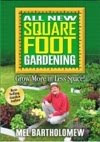First things first. Congratulations to Becca, who is now a college graduate--with Honors!
That is three and out for us, which in the context of college educations, as opposed to football, is a good thing.
Next, some unfinished business. When I baked the 10-Grain Bread for the last assignment I thought it was too dense, but vowed to try it again. So I did, paying more attention to the dough. It seemed fine when I mixed it, but after sitting in the fridge for a day or two it was VERY dry. So dry and heavy that it seemed unlikely the little yeasties could get it to rise. I had made a half recipe, which I cut in half to make two loaves. I baked one loaf as was, as a control, and got the same dense result.I worked some extra water into the second half of the dough and put it back in the fridge to rest. When I got back to it it was much more supple, and it rose much better. As a result, the loaf was much lighter.
I am not sure the extent to which the hydration issue was the result of using freshly milled flour, or just the cereal. Clarice at Hearth Arts had the same problem with this bread, but I am not sure what type of flour she used. With the right hydration this bread is definitely worth making, so maybe you just need to see how the dough feels after it has rested, and adjust accordingly.
Now, on to this assignment. First up is Anadama Corn Bread. According to the source of all truth and wisdom, Wikipedia (The Long Tail; Why the Future of Business is Selling Less of More, a fascinating book which I highly recommend, has an interesting discussion on the relative merits of the Encyclopedia Britannica and Wikipedia), "Anadama bread is a traditional bread of New England made with white flour, cornmeal, molasses and sometimes rye flour." The article notes that
It is also not readily agreed exactly when or where the bread originated, except that it exists before 1850 in Rockport, MA. It is thought it came from the local fishing community but it may have come through the Finnish Community of local stonecutters. During the turn of the century around 1900 it was baked by a man named Baker Knowlton on King Street in Rockport, MA and delivered in a horse-drawn cart to households in Rockport by men in blue smocks. In the 1940s a Rockport restaurant owned by Bill and Melissa Smith called The Blacksmith Shop on Mt. Pleasant St. started baking the bread for their restaurant in a small bakery on Main St. They baked about 80 loaves a day until 1956 when they built a modern $250,000 bakery on Pooles Lane. They had 70 employees and 40 trucks which delivered Anadama Bread all over New England. * * * the Anadama Bread Bakery on Pooles Lane in Rockport, MA closed [in 1970] due to Bill Smith's death.As for the name, Wikipedia offers
There are several popular myths about the origin of the name, which mostly take this form:"A fisherman, angry with his wife, Anna, for serving him nothing but cornmeal and molasses, one day adds flour and yeast to his porridge and eats the resultant bread, while cursing, "Anna, damn her." The neighbors baked it because it was so delicious and coined it Anadama or Anadamy.
The loaves baked up nicely.

As a matter of purely personal taste, however, I was not a big fan of the molasses flavor. It was a bit too strong for me, though toasting seemed to mellow it out. Personally, I prefer the Broa from AB in 5. I adapted the AB in 5 recipe to make a version using more corn meal:
Cornier 5 Minute Broa
Keeps for 10 days
Full Recipe Half Recipe
375g 2.5 cup Corn meal 188g
560g 4 cups flour 280g
675g 3 cups water 338g
15g 1 1/2 TBS instant yeast 8g
15g 1 TBS salt 8g
20g 2 TBS gluten 10g
Mix, let rise and refrigerate as for any AB in 5 dough
Remove a 1 pound portion, form into a ball, flatten slightly, let rest to rise for 40 min.
Bake at 450 for 30 min.
Full Recipe Half Recipe
375g 2.5 cup Corn meal 188g
560g 4 cups flour 280g
675g 3 cups water 338g
15g 1 1/2 TBS instant yeast 8g
15g 1 TBS salt 8g
20g 2 TBS gluten 10g
Mix, let rise and refrigerate as for any AB in 5 dough
Remove a 1 pound portion, form into a ball, flatten slightly, let rest to rise for 40 min.
Bake at 450 for 30 min.
The second assignment this time was Whole Grain Brown Rice Bread. The dough was pretty wet, and I baked it in my covered pot. It rose well, due to the hydration, but the resulting loaf was still pretty "damp." It may be I did not cook it long enough, or maybe baking it in the covered pot for the first 2/3 of the time kept in too much moisture.


So I tried a second loaf. As I formed it I worked in a bit more flour, and I baked it in my perforated loaf pan and I used the convection bake on my oven. This loaf baked up better, or at least drier.
Both loaves tasted good, however, so next time you have leftover brown rice you might give this a try.
And so with this assignment we are in our final countdown. This was 10, and we now only have 9 to go--unless of course we have a green-white-checker.




















